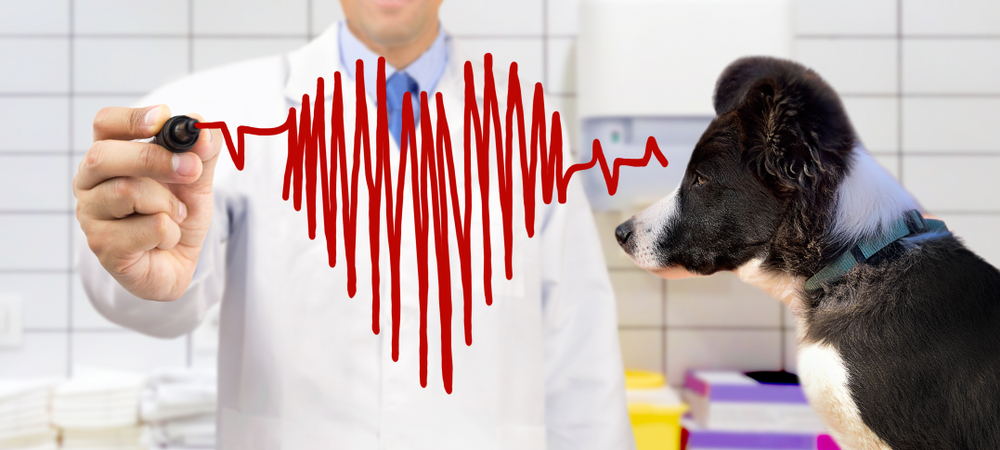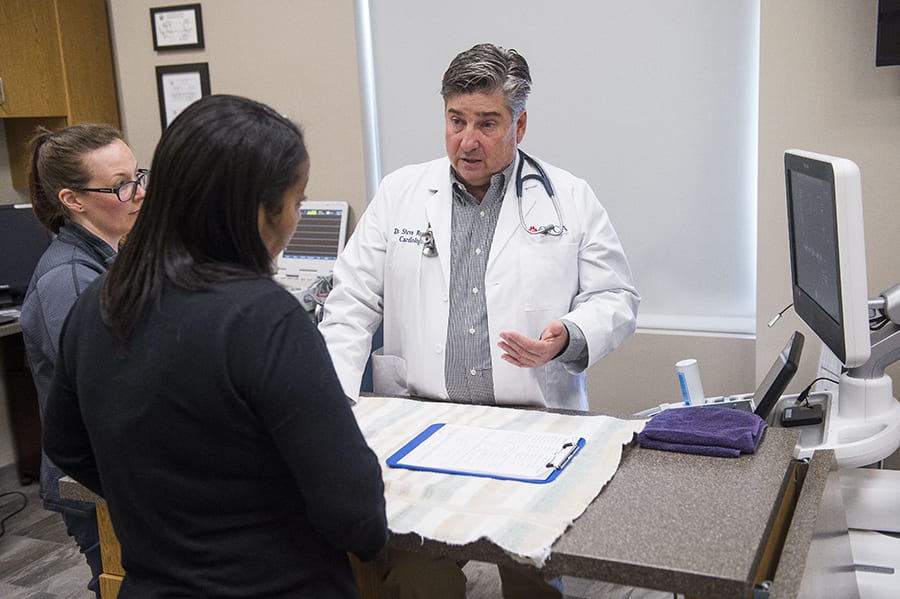The Role of Ultrasound and CT Scan in Modern Veterinary Practices: Insights From Experienced Professionals
In modern veterinary practices, ultrasound and CT scans significantly enhance analysis capacities. These imaging strategies supply critical understandings right into animal health and wellness, directing treatment choices. Experienced experts acknowledge the distinct benefits of each method. Ultrasound uses real-time assessments, while CT checks provide elaborate anatomical information. Recognizing their applications and roles elevates essential questions concerning their effect on patient end results and the future of veterinary diagnostics. What understandings can be gotten from their combined usage?
Comprehending Ultrasound in Veterinary Medicine
Ultrasound is a necessary analysis device in vet medicine, using a non-invasive technique to picture interior structures. This imaging technique employs high-frequency sound waves to create real-time pictures of cells and body organs, enabling vets to analyze conditions without medical treatment. Typical applications consist of examining the heart, liver, kidneys, and reproductive organs, as well as checking pregnancies.The procedure is relatively fast and can be executed in different settings, making it an obtainable choice for veterinarians. Unlike radiography, ultrasound offers detailed details regarding soft tissues and blood circulation, which is important for accurate diagnoses.Veterinary experts count on ultrasound to discover abnormalities such as lumps, cysts, and liquid accumulation. Its capacity to assist biopsies and other treatments better improves its utility in professional technique. By providing a reliable and risk-free way to examine internal makeup, ultrasound has become a keystone of contemporary veterinary diagnostics.
The Advantages of CT Checks for Animal Diagnostics
CT checks offer significant benefits in veterinary diagnostics by offering improved precision in identifying inner problems (Cancer Veterinary Near Me). As a non-invasive imaging strategy, they guarantee the safety and security and comfort of animals throughout evaluations. Additionally, CT checks help with a comprehensive analysis of inner structures, enabling much more reliable therapy planning
Improved Analysis Accuracy
Developments in imaging modern technology have considerably enhanced diagnostic accuracy in vet medication, particularly with the usage of CT scans. These scans offer in-depth cross-sectional pictures of an animal's interior frameworks, permitting veterinarians to identify irregularities with accuracy. The high resolution and three-dimensional capabilities of CT imaging assist in the discovery of problems such as tumors, fractures, and inner bleeding that may be missed with conventional imaging methods. Additionally, CT scans can aid in pre-surgical preparation by offering a thorough sight of anatomical connections. This degree of detail not just improves the precision of medical diagnoses but also aids in customizing reliable therapy strategies. Subsequently, the integration of CT technology right into vet techniques is changing the landscape of animal health care, improving results for patients.
Non-Invasive Imaging Technique
The intro of non-invasive imaging strategies has actually changed pet diagnostics, with CT scans becoming a prominent device in vet methods. These scans offer high-resolution, cross-sectional images of a pet's inner frameworks, enabling veterinarians to assess complex problems without the requirement for invasive treatments. The benefits of CT scans include their ability to detect lumps, fractures, and internal blood loss with amazing precision. In addition, they help with the assessment of soft cells and body organs, improving analysis abilities. The speed of CT scanning makes it possible for quick decision-making, which is essential in emergency scenarios. By lessening tension and pain for the animal, CT scans add to a much more gentle method to diagnostics, ultimately enhancing treatment results and advancing vet care.
Comprehensive Internal Evaluation
An extensive inner evaluation is essential for precise medical diagnosis and efficient therapy in veterinary medication. CT checks offer substantial advantages in this respect, giving comprehensive cross-sectional photos of an animal's interior frameworks. This advanced imaging technique boosts visualization of complex physiological areas, allowing vets to identify irregularities such as lumps, fractures, and interior blood loss with greater precision. Furthermore, CT scans assist in the analysis of problems that may be challenging to identify via conventional methods. The speed and precision of CT imaging additionally add to prompt treatments, boosting client results. As veterinary methods increasingly include CT technology, the advantages of comprehensive interior analyses come to be noticeable, reinforcing the significance of this tool in contemporary veterinary diagnostics.
Comparing Ultrasound and CT Imaging Techniques
While both ultrasound and CT imaging serve necessary duties in vet diagnostics, each method uses distinctive benefits and constraints that can affect scientific decision-making. Ultrasound is specifically valued for its real-time imaging capacities, permitting vets to observe vibrant physical processes. This technique is non-invasive, portable, and does not entail ionizing radiation, making it a more secure alternative for both clinicians and animals. Ultrasound might have constraints in picturing certain physiological frameworks or deep tissues.Conversely, CT imaging offers detailed cross-sectional sights of the body, allowing for specific localization of irregularities. It masters reviewing complicated organs and frameworks, especially in the thorax and abdomen. CT scans require sedation or anesthetic in numerous instances and involve direct exposure to ionizing radiation. Eventually, the choice between ultrasound and CT depends on the certain clinical circumstance, the area of passion, and the urgency of the analysis requirements.
Instance Studies: Effective Medical Diagnoses With Imaging
Study highlight the significant enhancements in analysis accuracy attained through sophisticated imaging technologies like ultrasound and CT scans in veterinary techniques. These advancements not just boost the detection of different problems but additionally facilitate effective and timely therapy plans. Assessing certain cases can highlight the transformative effect of these imaging strategies on veterinary medicine.
Diagnostic Precision Improvements

Imaging Modern Technology Advancements
As vet imaging modern technology proceeds to evolve, its effect on diagnostic capacities ends up being increasingly obvious. Recent case studies highlight the effective application of advanced ultrasound and CT scan techniques in determining complicated conditions. A veterinary facility utilized high-resolution CT scans to diagnose an unusual form of lung cancer in a pet dog, which standard imaging had missed. Similarly, an ultrasound assessment disclosed a stomach mass in a feline, motivating prompt surgical treatment and a positive result. These developments not just boost diagnostic accuracy however additionally make it possible for veterinarians to devise targeted therapy plans. By leveraging innovative imaging technologies, veterinary professionals are noticeably boosting client care, causing more reliable management of different health problems in animals.
The Role of Imaging in Emergency Situation Veterinary Treatment
Imaging plays a crucial duty in emergency vet treatment, supplying vets with vital information required to make fast, educated decisions. In immediate scenarios, methods like ultrasound and CT scans enable practitioners to promptly analyze a pet dog's inner structures, identifying vital problems such as internal bleeding, cracks, or organ problems. These imaging methods enable for real-time assessments, promoting timely interventions that can be life-saving. Ultrasound is important for assessing soft cells injuries and conditions like liquid build-up, while CT scans deal detailed pictures of complex anatomical frameworks, important for diagnosing injury situations. The speed and precision of these imaging methods boost the vet's ability to devise effective treatment strategies, making sure the most effective possible end results for their clients. Consequently, the combination of innovative imaging technologies into emergency veterinary techniques is not only helpful yet increasingly required, as it enhances analysis capabilities and boosts total pet care throughout defining moments.
Training and Knowledge in Veterinary Imaging
Advanced imaging methods such as ultrasound and CT scans are necessary for reliable vet treatment, the successful application of these modern technologies heavily depends on the training and competence of veterinary professionals. Proficient usage of imaging devices requires comprehensive expertise of anatomy, pathology, and the principles underlying each modality. Vet professionals need to undertake customized training to accurately translate imaging results, which is essential for identifying problems and intending treatment.Certifications and proceeding education in vet imaging boost the skills of professionals, allowing them to remain updated with technical innovations. Collaboration in between vets and radiologists commonly causes improved diagnostic accuracy, as specialists can provide insights into complicated instances. On top of that, sensible experience in managing imaging tools cultivates confidence in its application. Inevitably, the quality of vet imaging services is straight correlated to the degree of training and expertise possessed by the specialists utilizing these vital analysis devices.
Future Trends in Diagnostic Imaging for Animals
With the quick improvements in innovation, vet diagnostic imaging is positioned for substantial advancement in the coming years. Emerging patterns show a shift in the direction of more available and portable imaging techniques, such as portable ultrasound tools, which might improve area diagnostics. Furthermore, the integration of expert system is expected to revolutionize image evaluation, permitting quicker and a his response lot more precise interpretations of results.Moreover, innovations in 3D imaging methods and computed tomography will provide vets with more complete views of pet anatomy, bring about enhanced therapy plans. Digital Read Full Report reality modern technology may additionally contribute in medical planning and education, providing vets a special perspective on intricate cases.As telemedicine remains to expand, remote consultations facilitated by analysis imaging will certainly end up being extra typical, enabling specialists to aid family doctors in real-time. In general, these trends are readied to boost the performance and effectiveness of vet treatment, ultimately boosting pet outcomes.
Often Asked Inquiries
Just How Much Do Ultrasound and CT Scans Expense in Vet Facilities?
The costs of ultrasound and CT scans in vet facilities generally range from $300 to $1,500, relying on aspects such as area, facility kind, and certain procedures required for the animal's medical diagnosis and therapy.

Exist Any Dangers Connected With Ultrasound and CT Checks for Pet Dogs?
Ultrasound and CT scans typically present marginal threats to pet dogs. However, possible issues include sedation reactions and direct exposure to anesthetics. Board Certified Veterinary Cardiologist. Veterinarians carefully analyze each instance to mitigate any threats related to these diagnostic treatments
For How Long Do Ultrasound and CT Procedures Generally Take?
Ultrasound treatments typically take about thirty minutes to an hour, depending on the complexity. CT scans, being even more detailed, generally call for half an hour to 90 minutes, including prep work and recovery time for the pet dog.
Can All Veterinarians Perform Ultrasounds and CT Scans?
Not all veterinarians can perform ultrasounds and CT scans. Specialized training and qualification are often called for to assure expertise in these advanced imaging strategies, which may limit their schedule to vets with extra qualifications and resources.
What Kinds Of Pets Benefit A Lot Of From These Imaging Techniques?
Specific animal varieties, especially dogs and felines, benefit substantially from ultrasound and CT scans. These imaging strategies enhance diagnostic precision for conditions like tumors, inner injuries, and body organ irregularities, resulting in better therapy results and individual care. The high resolution and three-dimensional abilities of CT imaging help with the detection of conditions such as lumps, cracks, and inner blood loss that could be missed with standard imaging approaches. Instance studies highlight the substantial enhancements in analysis precision achieved via advanced imaging innovations like ultrasound and CT scans in veterinary practices. Improving diagnostic precision in vet practices has been significantly assisted by innovations in imaging modern technologies such as ultrasound and CT scans. Advanced imaging methods such as ultrasound and CT scans are important for effective vet care, the effective execution of these innovations greatly depends on the training and proficiency of veterinary experts. Veterinary read this experts need to undergo specific training to precisely translate imaging results, which is crucial for identifying conditions and intending treatment.Certifications and proceeding education and learning in veterinary imaging boost the abilities of specialists, allowing them to stay updated with technical innovations.